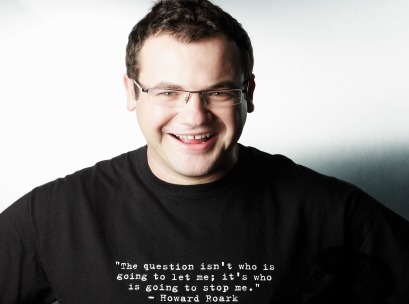When it comes to investing in online retailers, the market struggles to distinguish between businesses, argues founder and CEO of Kogan.com, Ruslan Kogan. “The problem when investor markets start to look at online retail is everyone looks the same,” Kogan said, while speaking at The Internet Conference on the Gold Coast last week. “One thing that has stayed constant for hundreds of years before e-commerce came along is: a good business is a good business and a shit business is a shit busin
ess.”
Kogan argued that the health of a bricks and mortar business can be determined by walking into a store, while what makes online retail successful happens out of sight.
“In bricks and mortar you can often easily see it by walking into a store, in online retail it’s a different ball game,” he said.
“If you were going to consider an investment in Costco and you walked into a Costco store and looked around you’d go, ‘Whoa, they’re onto something, look at all these people… this is operating like a machine’.
“You go to an online retailer and everybody’s website looks pretty, whether you’re a good business or a bad business, making a pretty website isn’t difficult at all. Getting it to work well at the back end, that’s a different ball game.”
Kogan said the online department store is investing significantly in algorithmic predictions engines, which serve shoppers the most relevant items from its inventory of 30,000 products, as well as automating its fulfilment processes to get items to customers more quickly.
These investments come as the profile of the Australian online shopper is beginning to change, Kogan argued, tipping that growth in the e-commerce sector will be driven by appealing to the mass market customer.
“We think that the online customer, especially in Australia is changing, and it’s only just starting to hit the mass market,” Kogan said.
“If you look at the last 10 or 15 years the [online] customer has been somebody who is looking for the best price and they are willing to do two hours of research to shop around.
The reason for Australia’s percentage of online retail spend is less than that of US, UK and China is because Australian shoppers aren’t buying online out of convenience yet.
Appealing to a customer who is shopping online for convenience, who wants to “click, click, buy, receive”, will increase the size of Australian e-commerce market.
“They’d rather spend their weekend with their grandkids in the park and have the item arrive the next day,” Kogan said. “That’s the mass market customer and that what’s going to bring Australia to be the same portion of online retail as we see in the US, UK, China and so on.”
Despite opening a temporary pop-up store in Melbourne in December 2015, a store network isn’t on the horizon for the online retailer.
“We were just playing around,” Kogan said. “For us it’s not part of a bigger grand plan or strategy. We were just experimenting.”
Kogan said the store on Chapel Street was opened less than a week after signing the lease agreement and “was an interesting learning experience”.
The online retailer experimented with hyper-local data, stocking the pop-up with the most popular products purchased in the surrounding area, refining an inventory of 30,000 products down to just 150.
Kogan.com also offered free shipping for shoppers who connected to the instore Wi-Fi and made a purchase to drive customers to the store.
Access exclusive analysis, locked news and reports with Inside Retail Weekly. Subscribe today and get our premium print publication delivered to your door every week.

